#Arthur Freed
Text

Arthur Freed, Judy Garland, Louis B. Mayer, and Irving Berlin in 1948 working on EASTER PARADE
33 notes
·
View notes
Photo


The Harvey Girls (1946) Dir: Arthur Freed
#The Harvey Girls#arthur freed#literature#samuel hopkins adams#filmgifs#classicfilmblr#dailyflicks#oldhollywoodedit#filmandtv#moviegifs#userpavlova#userrobin#periodedit#classicfilmcentral#moviehub#ours#by natty
1K notes
·
View notes
Text
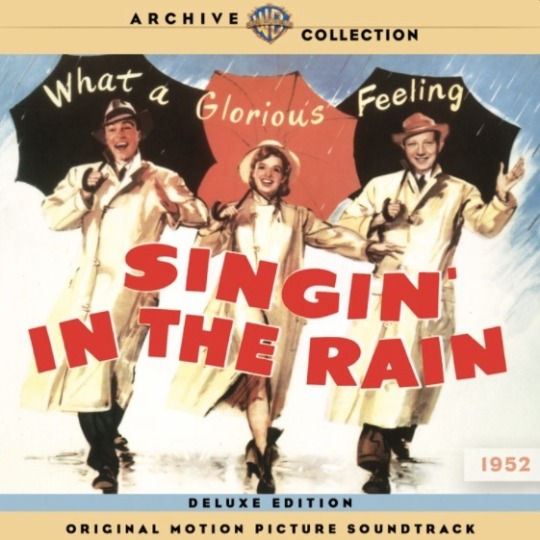

#do you know this musical#musical theater#poll#movie musical#singin' in the rain#gene kelly#stanley donen#adolph green#betty comden#nacio herb brown#arthur freed#language: english
48 notes
·
View notes
Text

Meet Me in St. Louis (Vincente Minnelli, 1944)
#meet me in st. louis#vincente minnelli#margaret o'brien#musical#arthur freed#mgm#drunk#children#technicolor#1944
13 notes
·
View notes
Text
youtube
You're all my lucky charms
I'm lucky in your arms
You've opened heaven's portal
Here on earth for this poor mortal
“You Are My Lucky Star” and “I've Got a Feelin' You're Foolin'” from The Broadway Melody of 1936 (1935) – music by Nacio Herb Brown; lyrics by Arthur Freed; performed by Frances Langford and orchestra
2 notes
·
View notes
Text
Good Morning
it's great to stay up late
Good Morning
Good Morning to You!
🆓 "I'm going to spać, good dzień everyone, hakuna matata 👋" - i tyleśmy go widzieli.

#Nacio Herb Brown#Arthur Freed#Judy Garland#Mickey Rooney#Betty Noyes#Gene Kelly#Donald O'Connor#Babes in Arms#Singin' in the Rain#Szogun#Misiek
4 notes
·
View notes
Text
IT'S ALWAYS FAIR WEATHER ( Beau fixe sur New York) - Stanley Donen et Gene Kelly (1955)
Après On the Town (Un jour à New York) et Singin’ in the Rain (Chantons sous la pluie), It’s Always Fair Weather (Beau fixe sur New York) est la dernière des trois comédies musicales signées par Stanley Donen et Gene Kelly sur un scénario de Betty Comden et Adolph Green, au sein de la fameuse “Freed Unit” à la MGM, du nom du producteur. Film rare, injustement resté dans l’ombre des deux premiers…
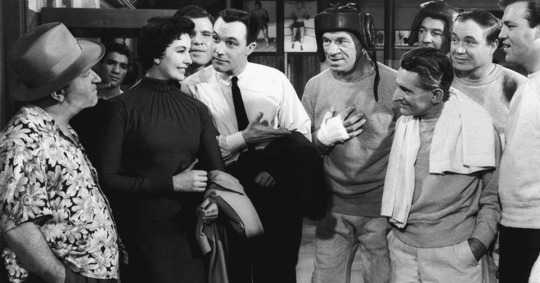
View On WordPress
#arthur freed#comedie musicale#cyd charisse#dolores gray#gene kelly#michael kidd#musical#stanley donen
2 notes
·
View notes
Text

On the Atchison, Topeka and The Santa Fe!
12 notes
·
View notes
Text
youtube
Although the Marx Brothers' 1935 film A Night At The Opera was a success, it took until 1950 for tenor & actor Allan Jones to release a commercial recording of Alone. Originally written by Nacio Herb Brown & Arthur Freed for Jones to duet with Kitty Carlisle in the film, this performance features a beautiful arrangement and lovely delivery.
"There must be someone waiting
Who feels the way I do
Wherever you are, are you, are you
Alone...?"
8 notes
·
View notes
Text
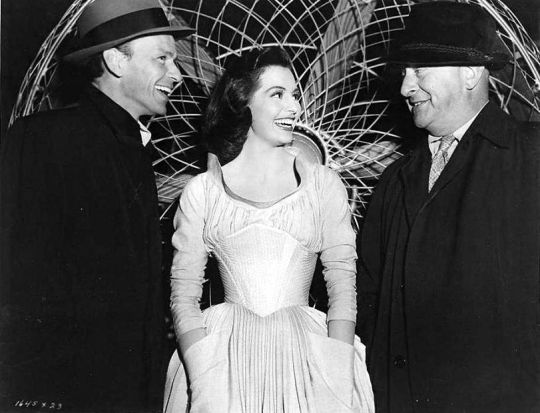
Frank Sinatra visits Cyd Charrise and director Arthur Freed on the set of Brigadoon circa 1954
2 notes
·
View notes
Text
Mary Lou Williams' "Free Spirits": A Jazz Odyssey of Timeless Brilliance
Introduction:
In the vibrant landscape of jazz history, certain albums resonate as masterpieces, encapsulating the brilliance of their creators and the spirit of their era. Mary Lou Williams’ “Free Spirits” stands as a luminous gem within this pantheon. Released in 1976, this album is a testament to Williams’ boundless talent as a pianist and composer. Recorded with the exceptional ensemble of…
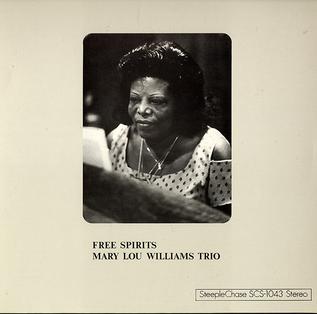
View On WordPress
#Arthur Freed#Bobby Timmons#Buster Williams#Classic Albums#Free Spirits#Jazz History#John Stubblefield#Mary Lou Williams#Mickey Roker#Miles Davis#Nacio Herb Brown#Oklahoma#Oscar Hammerstein II#Richard Rodgers#Timme Rosenkrantz
0 notes
Text
Singing in the Rain, illustrated by Tim Hopgood. Based on Arthur Freed and Nacio Herb Brown’s song
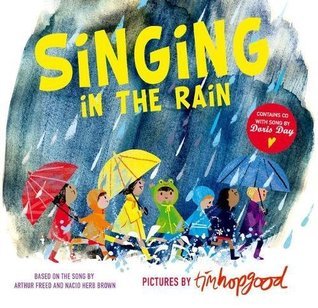
Age Recommendation: Early Learning
Topic/ Theme: Rain and Happiness
Setting: Gobal
Rating: 4/5
This is such a lovely and colourful book. The rainbow and fun of the raincoats shine so wonderfully through the rain. The characters travel all over, seeing different parts of the world some easily distinct, others less so. This provides something new to see on every page. From animals to flowers to expressions. It is a book that will grow with readers. The illustrations are created through watercolours and pencil, a perfect choice given the rain theme. The watercolour adds the right tone and feel to rain. There is some diversity in the cast of children singing in the rain. I appreciate the choice to include the musical notation as well as the lyrics which form the words of the book.
This edition comes with the book read by British actress Sophie Aldred and a recording of the titular song by Doris Day, available on YouTube (it was unlistenable on my copy). That book reading is wonderful not so much for Aldred's skill as a reader but for the backing track. Through the illustrations, there are animals, clear setting markers in the backing track these are reflected. Rainforests, birds, splashing puddles. It's just really appealing. As is the chime to change the page and that was a sound of my childhood. I used to listen to books like this as a child. I had completely forgotten that until I heard that sound.
This really is a book for all ages. While the intended audience is children Tim Hopgood has kept the adults in mind. In his author note Hopgood says "As adults, we tend to think of rain as an inconvenience rather than the joyous thing that it is. Next time it rains, step outside, feel the rain and give the clouds up above your biggest smile!"
#singing in the rain#picture story#tim hopgood#arthur freed#nacio herb brown#book review#ktreviews#read 2022#booklr
1 note
·
View note
Text
'Singin' in the Rain' – Gene Kelly's gotta dance on HBO Max
‘Singin’ in the Rain’ – Gene Kelly’s gotta dance on HBO Max
Singin’ in the Rain (1952) has been hailed as the greatest American musical ever made. It’s certainly one of the most fun, a knockabout reimagining of the transition from silent to sound movies: lousy history but a blast of singing, dancing, romancing energy and color.
Gene Kelly is Don Lockwood, the vaudeville schlub turned movie stuntman and finally matinee idol. His introduction is brilliant,…

View On WordPress
#Adolph Green#Arthur Freed#Betty Comden#Blu-ray#Cyd Charisse#Debbie Reynolds#Donald O&039;Connor#DVD#Gene Kelly#HBO Max#Jean Hagen#Kathleen Freeman#Millard Mitchell#Nacio Herb Brown#Stanley Donen#VOD
1 note
·
View note
Note
pamper tiny chuuya tooo pleaseeeee (also can i see tiny verlaine and rimbaud) 🙏
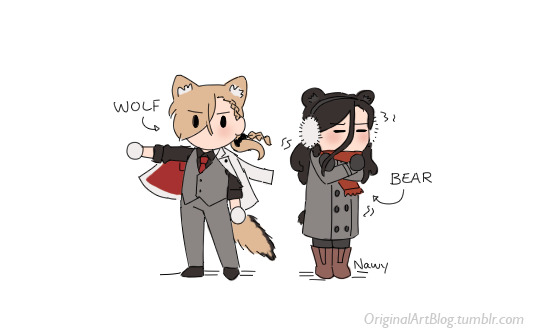
I tinified them :)
#tiny chuuya pampering will come later#i suddenly felt the urge to pick animals for them#verlaine is based on a grey wolf (went instinct in france but started coming back from other countries btw)#(also something something metaphor for him being an attack dog/puppet before being freed and turning against his master)#rimbaud is a brown bear because he's cold and really we should let him bundle up and hibernate (no black bears in europe but whatever)#i didn't think i'd make these two as the first tiny skk guests yet here we are#also until now i hadn't noticed how their colors match#bsd#bungo stray dogs#bungou stray dogs#tiny skk adventures#bsd fanart#bsd paul verlaine#bsd arthur rimbaud#stormbringer#storm bringer#bsd stormbringer#ask answered#nawy's doodles
2K notes
·
View notes
Photo
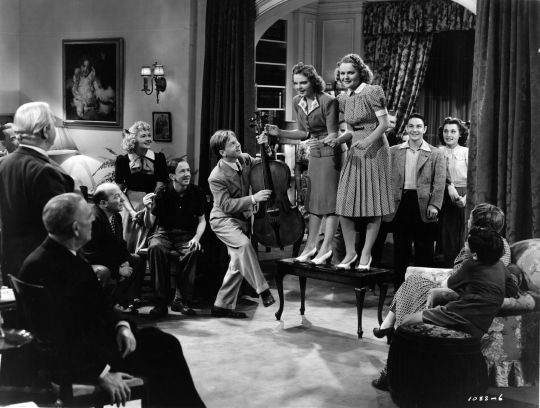
Babes in Arms (1939)
When did the “theater kid” stereotype become a term of dismissal? Through my secondary school days (and this goes for those in secondary education at the present time, too), the theater kid designation was always derisive, to denote classmates too obsessed with musical theater and often keeping to their own clique. Being an orch dork myself in those days, I found myself in an awkward middle ground: understanding fully a theater kid’s love of musical theater, yet a bit intimidated by their devotion to the medium.
The above is a circuitous way to ironically note that I have never been uncomfortable with Metro-Goldwyn-Mayer’s (MGM) hey-kids-let’s-put-on-a-show musicals of the 1930s and ‘40s. Central to that subgenre of musical at MGM were Judy Garland and Mickey Rooney – both embodying, in most of their ten joint movie appearances from 1937-1948, the traits identifiable to anyone who understands how theater kids behave. Their movie musical collaborations contain no narratives of note, just sheer musical and choreographic virtuosity that holds up more than eighty years later. Babes in Arms, directed by Busby Berkeley, is the first of Berkeley’s unofficial “Backyard Musical” series starring Garland and Rooney – later followed by Strike Up the Band (1940) and Babes on Broadway (1941). Having seen only the middle film of that trilogy before, Babes in Arms is the weaker of the two I have completed. But for a roughly ninety-minute romp with puffed-up adolescent drama and a modest budget, Babes in Arms is decent value for those interested in movie musicals and the filmographies of those involved.
It is 1921 somewhere in America. Vaudeville patriarch Joe Moran (Charles Winninger) announces the birth of his only child, a son. Fatefully, his son is literally born on stage. Fast forward to the late 1930s and we find Joe’s son, Mickey (Mickey Rooney) teaming up with girlfriend Patsy Barton (Judy Garland; whose character comes from a different vaudeville family) to sell one of his songs to a music publishing company. He’s on piano; she’s the singer as they perform “Good Morning” (yes, that same song Gene Kelly, Debbie Reynolds, and Donald O’Connor hoofed so magnificently to in 1952’s Singin’ in the Rain). The publishers unsurprisingly purchase Mickey’s song. $100 (more than $2,000 in 2022’s USD) in hand, Mickey returns home to his parents but is aghast to learn that his parents – who left the vaudeville circuit shortly after the 1927 introduction of synchronized sound in movies – are heading back on tour without him. To convince his parents to bring him along, he and Patsy piece together a plan that any spurned child might pursue: to put on a show with the other musically talented kids in the community (deeming themselves the “Babes in Arms”).
Teenage drama ensues including an unnecessary physical assault, a preventable love triangle, and an unfortunate decision to use blackface (more on this later). The cast also includes Grace Hayes as matriarch Florrie Moran, Margaret Hamilton as busybody Martha Steele, Rand Brooks as Martha’s nephew, Guy Kibbee as a judge, and June Preisser as the third side of the aforementioned love triangle with an unfortunate nickname. Betty Jaynes plays Mickey Rooney’s elder sister while Douglas McPhail plays Don Brice, one of the older kids with an underutilized baritone.
Babes in Arms is technically based on composer Richard Rodgers and lyricist Lorenz Hart’s 1937 stage musical of the same name. And though Rodgers and Hart are credited, this film adaptation resembles little of their original work, with only two songs from the stage musical retained for this movie. “The Lady Is a Tramp” appears only in the score, while the title song and “Where or When”. “Babes in Arms” appears as Mickey Rooney rounds up the neighborhood teenagers to march militarily down the roads – crates and (gulp) torches in hand. With even brief quotations of “Ride of the Valkyries” from Wagner’s Die Walküre in the song (2:53 in provided video), these kids, however well-dressed, might be taking on their newest task too exuberantly. “Where or When”, a ballad that few ever seem to mention, is sung beautifully by Douglas McPhail and Betty Jaynes; the inclusion of the little children on their one-quarter or half-sized string instruments is a charming touch. Garland briefly sings “Where or When” too, and one just wishes she could carry the song to its conclusion.
Among the MGM musical entries, most will recognize “Good Morning” (music by Nacio Herb Brown, lyrics by Arthur Freed) during Rooney and Garland’s attempt to sell the former’s song to the publishing agency. This original rendition of “Good Morning” does not have the choreographic mastery as seen in Singin’ in the Rain, but it certainly establishes that easygoing dynamic audiences would see often between Garland and Rooney.
youtube
By the time the film hits the stage show that concludes Babes in Arms, Mickey, Judy, and company will have sung quite the gamut of musical numbers. Separating themselves from most of the soundtrack are “Daddy Was a Minstrel Man” and “God’s Country”. The former (music and lyrics by Roger Edens) opens the stage show and is the first part of a sequence where both Judy Garland and Mickey Rooney don blackface. Blackface, which originated from American minstrel shows in the early nineteenth century, is a theatrical device in which a typically non-black person wears makeup to portray a happy-go-lucky caricature of a black person. This offensive practice predates cinema and serves no useful performative or cinematic purpose – a non-black performer can pay homage to black culture without perpetuating stereotypes, such as applying blackface. Unfortunately, both Garland and Rooney would be in blackface again in the last film of the Backyard Musical trilogy, Babes on Broadway. For some, “Daddy Was a Minstrel Man” and the following song, “I’m Just Wild About Harry” (a 1921 number with music by Eubie Blake and lyrics by Noble Sissle), will be distracting, to say the least. Together, they smash the picture of teenage innocence that (mostly) courses through Babes in Arms.
“God’s Country” is unabashed American flag-waving that proclaims the U.S. as a divinely dynamic nation. Briefly quoting the melody from “Yankee Doodle”, the song – considering that the United States was, at this time, a mostly insular nation that would rather not be involved with the mounting tensions in Europe and Asia – offers some curious lyrics, such as celebrating American freedom with this:
A hundred million rooters can’t be wrong,
So give a hand, give a hand,
Give a cheer for your land,
Where smiles are broader, freedom greater.
Every man is his own dictator.
Even more surprising lyrics appear shortly after that lightly rib the soon-to-be Axis nations:
We’ve got no Duce;
We’ve got no Führer.
But we’ve got Garbo and Norma Shearer.
Got no goose step;
But we’ve got a Suzie Q step
Here in God’s country!
For a movie made before and released after Nazi Germany’s invasion of Poland, this is as strong a criticism as one might expect from a major Hollywood movie at this juncture. Through most of the 1930s, every major Hollywood studio except Warner Bros. heeded the demands and threats of Los Angeles-based Nazi Germany diplomat Georg Gyssling, who suggested edits on certain screenplays to root out any critique of Germany and Nazism. This cinematic appeasement was sweeping, but it appears that Gyssling and his associates missed a small detail in Babes in Arms.
Other than the wall-to-wall soundtrack, the main attraction for Babes in Arms are its two co-stars. Still teenagers, Rooney and Garland were given an adult’s workload. Including both feature films and shorts, Babes in Arms was Mickey Rooney’s ninety-sixth of ninety-eight films of the 1930s. Somehow, Rooney, already one of MGM’s brightest lights thanks to the Andy Hardy series (1937-1958), is abundantly manic and tireless here in his first movie musical. Even in comparison to the exhaustingly hyperactive of mainstream American filmmaking, Rooney’s enthusiasm almost leaps off the screen. For her part, Judy Garland was not a household name yet when she trotted in front of the camera to film Babes in Arms. Her performance is not quite assured here, and any hint of believable romance between her and Mickey Rooney is spotty more often than not in part due to a sloppy screenplay. By the time of the film’s release, The Wizard of Oz (1939) had already been out in theaters for more than a month. History correctly regards The Wizard of Oz as an essential film, but Babes in Arms grossed more at the box office in 1939. Babes in Arms cemented a career 1939 for Judy Garland, which, just before the film’s premiere, also saw her lay her hands and feet in the cement at Grauman’s Chinese Theater.
Director Busby Berkeley (choreographer on 1933’s 42nd Street and Gold Diggers of 1933) made a name for outlandish mass choreography, but his choreographic style fell out of fashion by the end of the 1930s. Babes in Arms is pedestrian work from the master visualist, but it also marks the beginning of lyricist Arthur Freed’s (1943’s Cabin in the Sky, 1951’s An American in Paris) career as an MGM producer. Within the MGM hierarchy, the “Freed unit” was an assemblage, under Freed’s leadership, of actors (many of whom were principally stage actors before signing up with MGM), composers and lyricists, writers, and directors with the express purpose of crafting movie musicals with little executive interference. Babes in Arms does not yet quite contain that artistic freedom of an Arthur Freed musical, but many of the personnel in front of and behind the camera would become key contributors to the Freed unit.
As manufactured and predictable as much of Babes in Arms’ drama might be, I find it still quite watchable. Several statements from Mickey Rooney decades after completing this film perhaps explain why. In any case that the Backyard Musical trilogy comes up in a Mickey Rooney interview, Rooney usually noted how semiautobiographical these films were for himself and Garland. Both came from vaudevillian families; public performance as natural to them as breathing. Garland and Rooney spent much of their lives on a stage – theater kids, if you will – and derived profound happiness from performance. Even when surrounded by disagreeable, perhaps abusive, persons while making these movies (there are indications that Berkeley was difficult towards Garland, who was already enduring MGM head Louis B. Mayer’s cruel barbs regarding her physical appearance), that desire to embolden and transport others remains.
Babes in Arms might not be to the liking of those who still disdain theater kids, nor any of the Backyard Musicals. For others like yours truly, who appreciate the musicality and energy on display but never quite belonged to either extreme, Babes in Arms is lighthearted entertainment, flawed in execution, honestly acted.
My rating: 6/10
^ Based on my personal imdb rating. My interpretation of that ratings system can be found in the “Ratings system” page on my blog (as of July 1, 2020, tumblr is not permitting certain posts with links to appear on tag pages, so I cannot provide the URL).
For more of my reviews tagged “My Movie Odyssey”, check out the tag of the same name on my blog.
#Babes in Arms#Busby Berkeley#Mickey Rooney#Judy Garland#Charles Winninger#Guy Kibbee#June Preisser#Margaret Hamilton#Jack McGowan#Betty Jaynes#Douglas McPhail#Kay Van Riper#Richard Rodgers#Lorenz Hart#Arthur Freed#Nacio Herb Brown#Roger Edens#TCM#My Movie Odyssey
9 notes
·
View notes
Text
malevoversary day 1: wraith / loss

[ID: An artwork of Arthur Lester from Malevolent holding a baby. A translucent wraith wraps its cloth arms around Arthur's. The piece is done in blue-green tones and there are 3 stylised stars in the background with a white border framing the image. End ID.]
#thinking about both arthur and the wraith seeing their respective children in the baby#and how arthur viewed the wraith as a monster but still freed her#and how he asked john for a description of the baby before letting her go#malevolent#malevolent podcast#malevoversary#malevoversary2024#arthur lester#axis art
534 notes
·
View notes